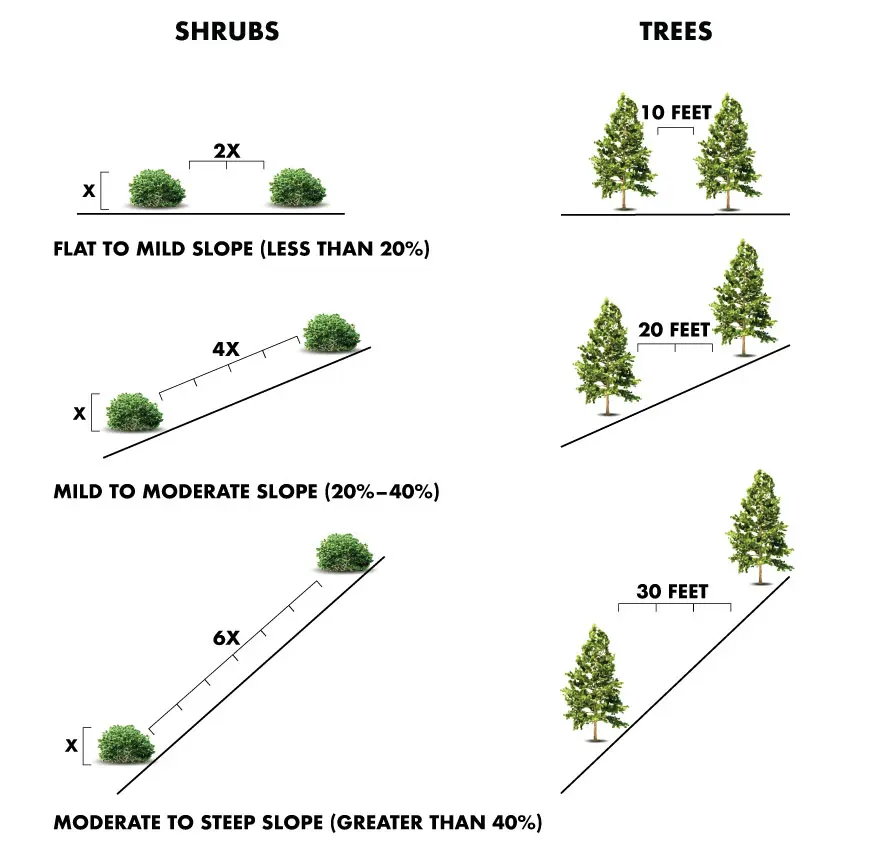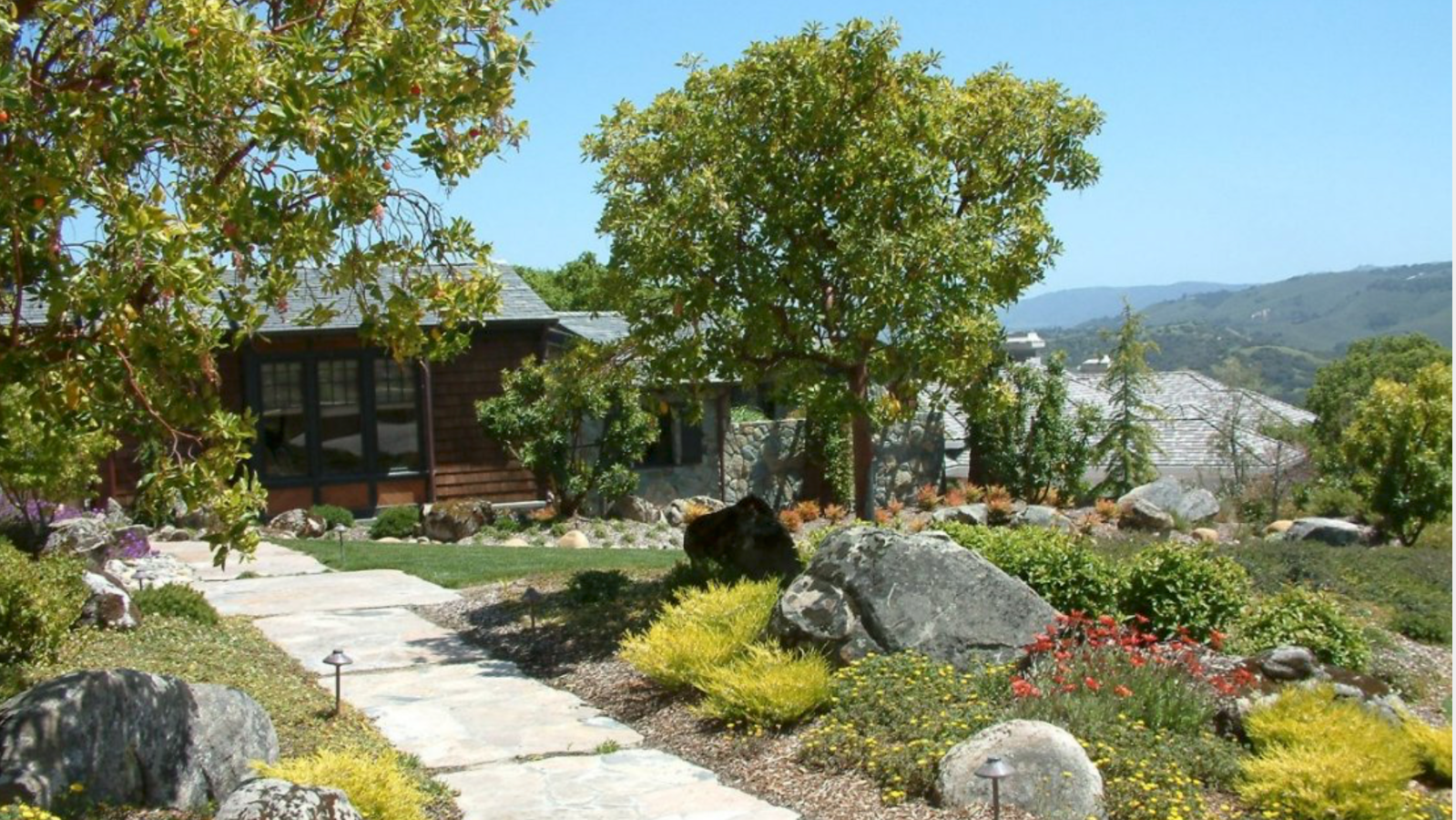Trees are often seen as the enemy when it comes to wildfires. While it is true that trees will burn, they are not the biggest danger to your home. Trees usually burn in dense forests, where continuous underbrush and ground fuel create a path for fire to travel. When there is a wildfire, embers are the biggest threat to your home. They blow ahead of the fire and cause spot fires where they land. However, embers tend to pass through a tree’s green canopy and collect on the ground or on rooftops. By properly maintaining your trees, you can help reduce your wildfire risk.
What to do:
- Clean up leaves, twigs and bark at the base of trees to prevent ember ignition.
- Trim bushes and shrubs beneath trees. Allowing space between ground plants and the first branch will prevent a fire from spreading to the tree.

- Limb up trees. This means removing lower branches, the recommendation for most trees is 6 ft of space from the ground to the lower branches.
- Create horizontal space between trees. Use the graphic below to help determine proper spacing.

- Remove tree limbs that go over your house.
- If you are concerned about a tree hazard that is not on your property, please contact your local fire department for an evaluation.
- Contact a licensed arborist to examine any trees on your own property that cause you concern; they will make recommendations on ways to improve their health and resistance to fire.
If you are planting a tree, make sure to use Cal Poly’s and CAL FIRE’s SelecTree tool which includes 178 fire-resistant tree species for Marin’s climate zones (Sunset Zones 15, 16, 17).








